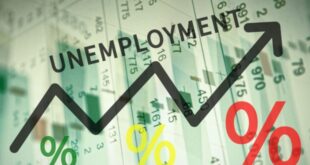The news is even better than that, because the region’s job count is slightly ahead of where it was in February 2020, right before the pandemic hit. The question now is, will that trend continue?
The Inland Empire labor market has officially recovered from COVID-19.
As of this month, the two-county region’s labor market has added 151,200 jobs since it hit its lowest point in April 2020, according to a report released March 23 by the UC Riverside School of Business Center for Economic Forecasting and Development.
The Inland region has increased its job count since the World Health Organization declared COVID-19 a pandemic in the spring of 2020. The Inland Empire labor market is now 1.4 percent above where it was when it peaked in February 2020, the survey found.
Total employment in Riverside and San Bernardino counties has risen nearly nine percent since February 2020, rather than declining by 2.2 percent as the California Economic Development Department predicted it would.
“The Inland Empire has now reached the point where we can talk about job growth as opposed to recovery,” said Taner Osman, research manager at the forecasting center and a co-author of the report.
California has recovered 92 percent of the jobs it lost, and with relatively high vaccination rates and falling hospitalizations, the job expansion at both the state and regional level should continue in 2022, Tanner said.
One local economist said he wasn’t surprised by the report’s findings.
“The Inland Empire has been recovering jobs at a stronger pace than other parts of the state, so I think you could see this coming and I think it will continue,” said Robert Kleinhenz, principal economist with Kleinhenz Economics in Long Beach, a consulting firm he started three years ago, and a longtime observer of the Inland Empire economy.
“Right now, Los Angels and Orange counties are about four percent short of recovering all of the jobs they lost during the pandemic, and San Diego County is about two percent short,” Kleinhenz. “So it makes sense that the Inland Empire recovered all of its jobs first.”
Kleinhenz also stood by the prediction he made early this year that the Inland economy, not just the labor market, will reach full recovery near the end of this year.
The Inland Empire economy was propped up largely by the logistics industry, which grew dramatically with the boom in online shopping caused by the pandemic.
“The region is adding jobs and I believe that trend will continue,” Kleinhenz said. “People who are working have more money to spend, and that will keep the [local] economy going.”
Some of the report’s main findings:
- Inflation has had an impact on the local economy, as wages in the Inland region grew by only 2.3 percent between the third quarter of 2020 and the third quarter of 2021, the most recent data available. By county, wages grew three percent in Riverside County and 1.7 percent in San Bernardino County.
Overall, that wage growth was “more modest” than other recent growth rates, the report states.
- Consumer spending in the Inland Empire continues to rise, with taxable receipts growing by nearly 23 percent between the third quarter of 2020 and the third quarter of 2021. That number is line with consumer behavior nationwide, and is in part of the massive economic stimulus the federal government pumped into the economy when the pandemic started.
- Sales of gas and other fuels increased by 57 percent during the last year. Gas prices have reached record levels during the first part of 2022, and spending in this category is almost certain to continue, driving prices even higher in the near-term.
- The Inland Empire’s leisure and hospitality sector is down an estimated 12,800 jobs from February 2020, a 7.2 percent decline and the most of any sector. Government, manufacturing, construction, information and wholesale trade also sustained significant job losses because of COVID-19, according to the survey.
- Warehouse vacancy in the Inland region fell to 3.6 percent at end of 2021. As of the 4th quarter of 2021 (the latest data available), despite 4.4 million square feet of new space coming online.
“Elevated consumer spending in e-commerce is the primary driver of high warehouse demand,” the report states, and there’s no arguing with that conclusion, according to Kleinhenz.
“When the pandemic started, the Inland Empire had the benefit of a strong logistics sector that was going to create jobs, and that helped a great deal,” said Kleinhenz, who also does research and consults with Inland Empire Economic Partnership, a non-profit that tries to attract businesses to the region. “I think there was an understanding that if a region had e-commerce and goods movement, ultimately it was going to be in good shape.”
 IE Business Daily Business news for the Inland Empire.
IE Business Daily Business news for the Inland Empire.


